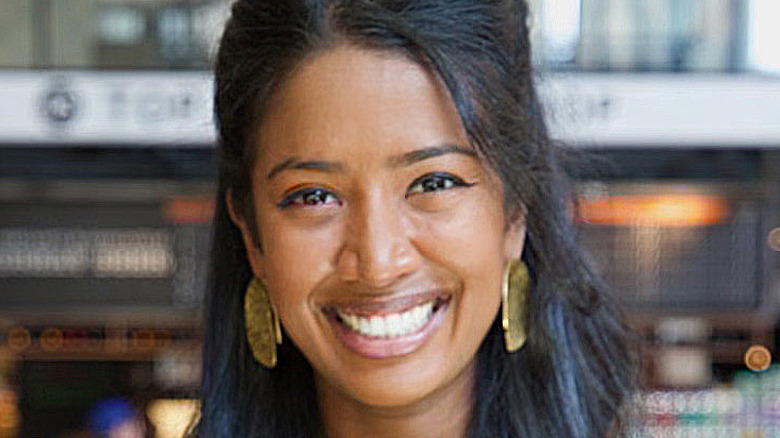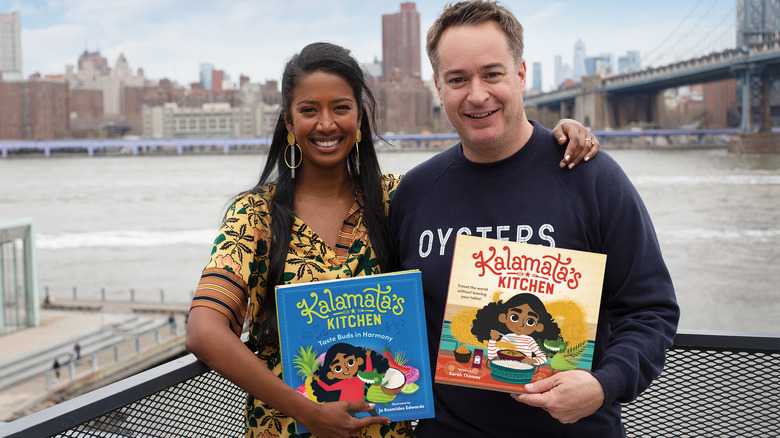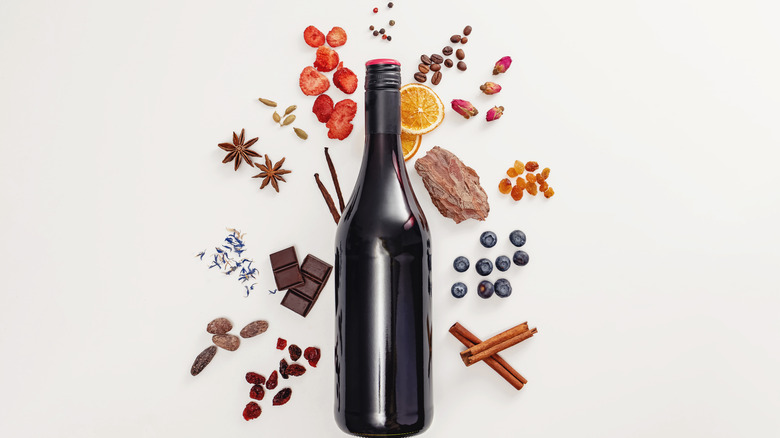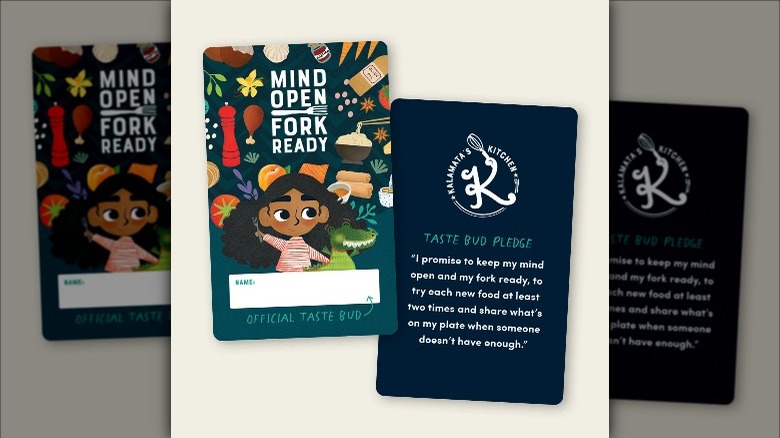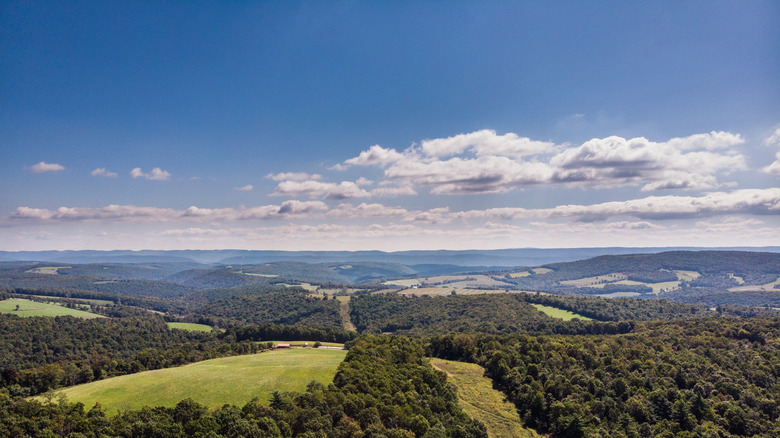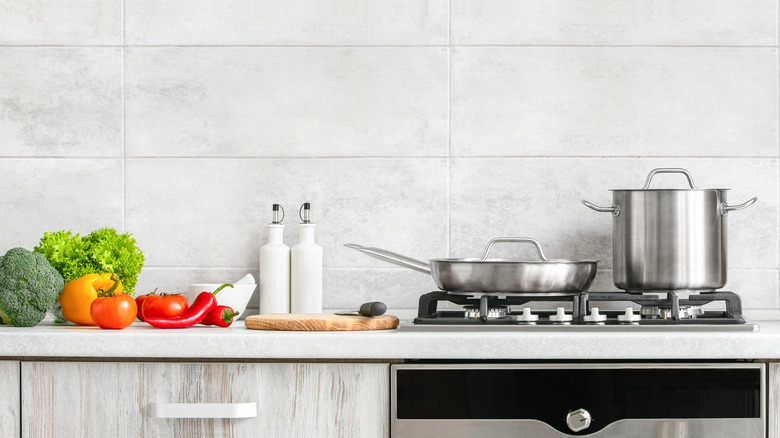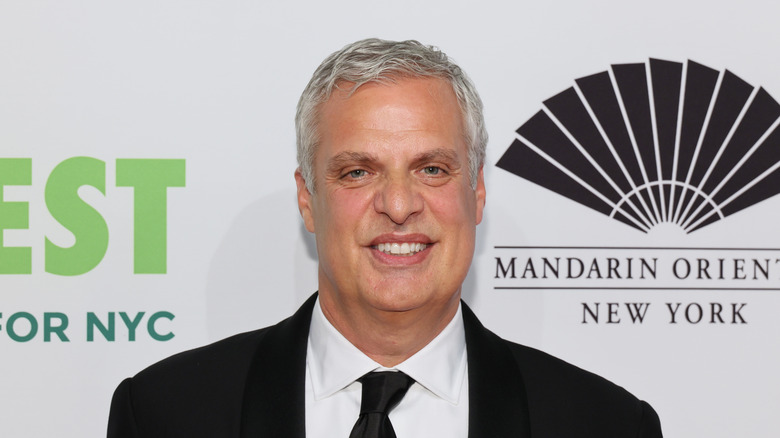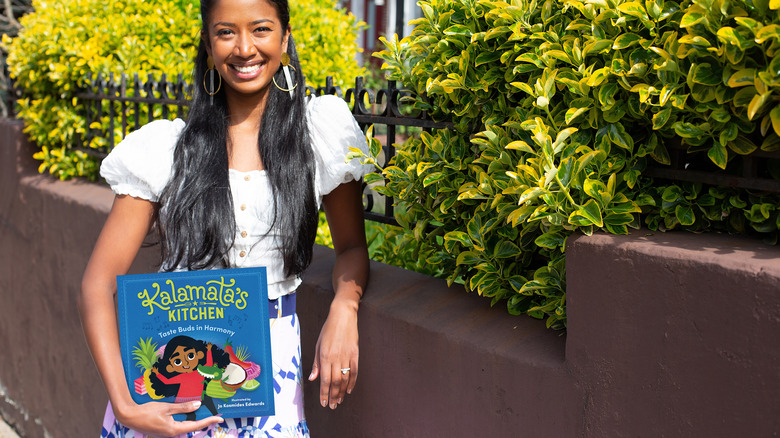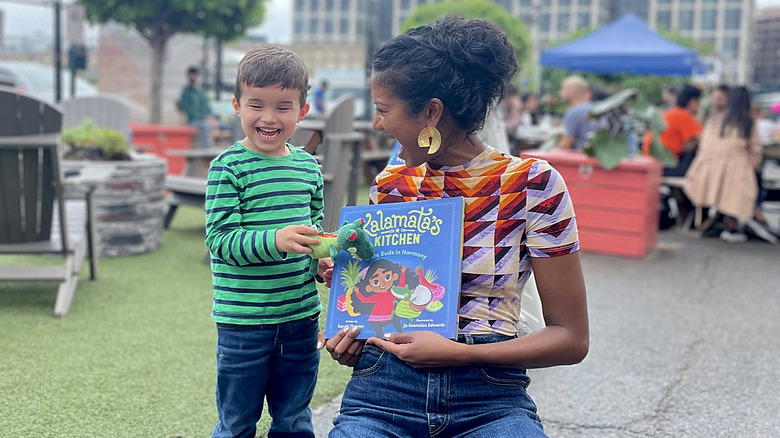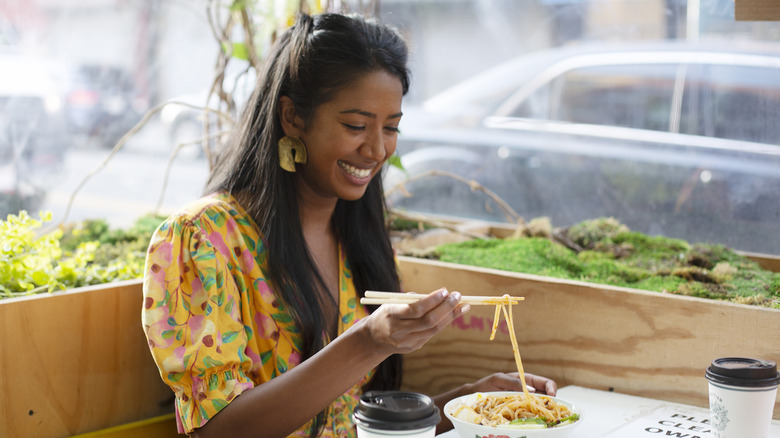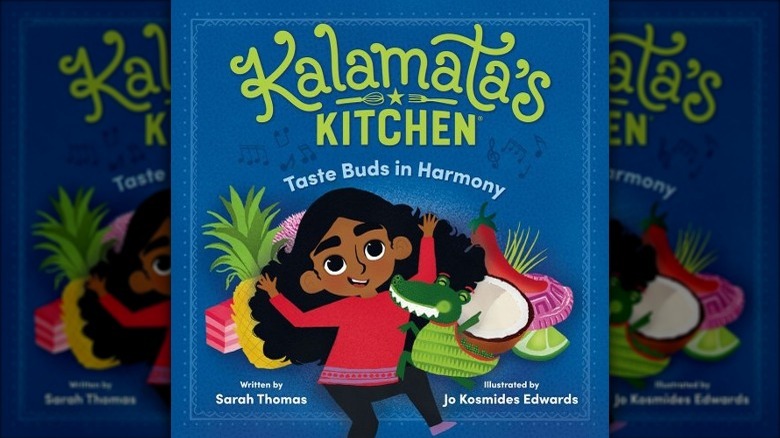Author Sarah Thomas Talks New Kalamata's Kitchen Book - Exclusive Interview
We may receive a commission on purchases made from links.
Getting children to try new foods is not always easy, and expanding their palates can become a challenge for both parents and children alike. Though this challenge doesn't scare Sarah Thomas, co-founder and author of the "Kalamata's Kitchen" books. Through her whimsical characters, and the books' bright captivating artwork (courtesy illustrator Jo Kosmides Edwards), Thomas teaches children to learn about new foods and take on the Taste Bud Pledge stating they "promise to keep my mind open and my fork ready, to try each new food at least two times, and share what's on my plate when someone doesn't have enough."
"Kalamata's Kitchen" was born out of co-founder Derek Wallace's drive to show his son the world through food. He teamed up with his friend, and then sommelier, Thomas to create a character to invite kids to experience the globe through culinary adventures in a fun and engaging way. The pair originally launched their first book through Kickstarter where they received full funding. Together, through Thomas' writing, we get to follow Kalamata and her alligator buddy, Al Dente, as they take on adventures and experience the challenges and delights of the world through their senses.
Since then, "Kalamata's Kitchen" has grown. Their website offers free activities and travel guides for young readers, as well as stuffed animals and apparel to keep them further engaged. Now, Kalamata and Al Dente are on their next journey, and they brought some new friends along. Mashed exclusively sat down with Thomas to find out what's in store for the friends, and what new tastes await.
Thomas' food journey, from wine to writing
You're a sommelier by training. Can you tell us a little bit about how you got interested in writing a children's book series?
It's funny, with both being a [sommelier] and with writing, it actually started way earlier than any training. I happened to be a little kid who was obsessed with two things: One was food, and the other was reading. I was always off in my imagination through books. I didn't love where I grew up, but I spent a lot of time reading as a result of it. The bedrock of who I am as person came from my mom's food and her cooking and all the things that I ate at home. I obviously had no idea that this was anything different at the time, but I did have a real obsession with tasting and smelling things all the time.
Though, professionally, it was a strange path for me to get here, it ended up being very logical for me to be a [sommelier], given my obsession with tasting, smelling, trying. My academic background is in writing [and] literature. At the time, I was working at Le Bernardin and I'd been there for several years and loved it. I felt I was doing pretty well at my job and wondering what my next step would be. A good friend of mine, Derek Wallace — who is now my business partner and co-founder of "Kalamata's Kitchen" — knew that I was looking for a way to work with kids again, which is something that I'd done a lot before I lived in New York, and looking to get back into writing, which is something I was just trying to explore at the time. But I was narrowly looking at just food and wine writing. And I [also wanted to] use my skill set that I had developed as a professional taster and smeller.
[Derek] came up with this idea of creating a children's character centered around food. I can't say that I would've connected the dots myself, but essentially what that amounted to was one of my best friends coming to me with the best idea I've ever heard, that seemed uniquely tailored to my skill set, interests, and passions. I hadn't considered writing a kid's book before, but it all really made sense when Derek laid it out that way.
Anyone can train their palate to like new foods, says Thomas
How do you think your training as a sommelier has influenced your own palate?
I say this a lot — it's not about an inherent ability to taste or smell better than anyone else. I don't have some innate talent in that field. When it comes to tasting and smelling, it's the power of being mindful and remembering things, remembering associations (and of course the training enhances this). It's something I ask both kids and grownups all the time: Do you know what a strawberry tastes like? Do you know what a strawberry smells like? You think you do, but when the smell is presented to you blind, are you able to identify it's a strawberry, if you can't see it? [For me], it's instinct at this point. I smell it. I smell it before I bite it. I smell it after I bite it.
Those things I call a Rolodex in my head. It's not that I'm better at tasting the strawberry and then identifying it when those same flavors are presented somewhere else, it's that I can make the association that exists there. The ability to be able to translate that to people, that's where the training really helps, because it doesn't matter if I can smell it. It really matters if you are having a good experience with it.
So leading people to talk about and experience wine in the vocabularies where they're at was really what was the most important part of my job, not impressing them with my knowledge about wine, but guiding them to an experience that was meaningful for them. I use the same philosophy when I talk to kids about how they experience the things that they eat and drink.
She's still open to trying new foods
You include the Taste Bud Pledge at the beginning of the "Kalamata's Kitchen" books, encouraging kids to try things twice. What is something you had to try twice?
I didn't grow up eating a lot of raw foods, raw proteins in particular. My parents are from south India. And that just isn't culturally something that you do, you typically don't eat any raw meat or raw fish where we're from in India anyway. Maybe there are people who do, but not where we are. I had this fear instilled in me that perhaps things weren't quite safe. Then someone who did not like sushi described to me what eating raw fish was like, and before ever even trying it, I had this horrible idea of what it would feel like to eat a chunk of raw fish.
I did not enjoy [sushi] the first time I'd had it. It was exactly what I thought it would be. It was a chunk of raw tuna and I was like, "Yeah. No, that's as bad as I thought it would be." What I had to realize, and what I had to get over, is that it was because I had expected it to be that bad. There was nothing inherently bad about it. It was that I had it in my head that it was going to be a bad experience.
So I didn't try just twice, I had to try [sushi] a couple times. My philosophy is that it's not the food, it's never the food. It's always me. I can get over things. And I always ask myself, "Why do I feel this way towards it?" And oftentimes it's just because I had some sort of preconceived notion. So learning to love the texture of raw fish in particular was something that I had to work through. Ironically, I ended up working at Le Bernardin, one of the greatest places for lightly-cooked raw seafood in the entire world.
What's one new food you've tried recently?
It happened just a couple nights ago. I was sitting at my local wine bar and they had Japanese water crabs. The way they described the dish, I thought it was going to be a soft shell situation. But they were these teeny, little whole crabs ... a bunch of them on a plate. So that was a first for me, but I enjoyed them. I like when I get to be surprised like that. I was laughing with my husband, saying, "That doesn't happen to me that often anymore."
How her childhood influenced the 'Kalamata's Kitchen' books
You grew up in a rural town in Pennsylvania. How did it influence you and your work with "Kalamata's Kitchen?"
Very directly. My parents are south Indian immigrants. I was born in Somerset, Pennsylvania. For a lot of first generation kids, [we] understand why [our] parents made the decisions they did, it was largely for survival. They wanted us to assimilate more than celebrate the culture that they had brought with them from India. I understand that, but at the time what they didn't get was that, no matter how much we tried to assimilate, we were always going to look like this. And there were always people that were going to not create the aura of acceptance that I think my parents optimistically thought that they would, even if we were as American as possible.
So I had a dual experience of really trying to fit in and suppress the things that made me more Indian or "other" in school and out in the world, but at home, my mom cooked constantly. We always ate Indian food. We traveled to India and stayed in India for all of our summer holidays, we never went anywhere else. My home life and my private life were very Indian. My public life was very not. There's always this kind of push-pull on what you're allowed to celebrate and what you're allowed to share, and what you have to keep to yourself. And when you have to start keeping things that you love to yourself, you start to feel shame about those things.
Those were difficult feelings for a kid to navigate. As I got older, I started to realize what was going on more and more. And by the time we started thinking about creating Kalamata and "Kalamata's Kitchen," I couldn't believe that 30-odd years later there were still not many characters that look like me, that had experiences like me, that loved the things that I did, that would've taught me that it was okay to celebrate the things that make me unique and special.
So we had to create her. It's very, very directly tied to me never wanting kids to be ashamed of the things that make them special, [and encouraging] kids to seek out the things that make their friends unique and special, to celebrate themselves as well as those around them. That's all straight from not having it myself. People often ask me if I'm Kalamata, and I always say she is the little girl I wish I had been — really proud and in charge and happy to celebrate herself and others.
Her family's kitchen was the center of the home
What was your family's kitchen like growing up?
It was always the center of everything. It was physically in the center of the house, an open kitchen. There was a little dining area off to the side and the main dining area off to another side, but it all opened into the kitchen. There were multiple rooms where people could hang out outside of the bedrooms, but nobody ever did. So the center of action in my house was always the kitchen, and it was usually my mom in the kitchen. I spent almost all of my time at the dining table, just immersed. I didn't really cook with her ever, but I was always watching her. I was always smelling. I was listening. I was tasting when I could, and very immersed. It was very central to our lives.
Oh, and we had this huge fan. This is just hilarious to me. We had this enormous industrial-sized fan for venting. And when [my mom would] cook all day, she'd put this huge fan on. It would waft the smell literally all over my neighborhood. So everyone knew when my mom was cooking, and I thought it was a great smell. I don't know that everyone else did, but I loved it.
What are some foods that were available to you growing up that you can't get anymore?
I feel like you can get everything, everywhere now with the internet. But available to me growing up ... maybe some junk foods that weren't so Western.
Discontinued junk foods counts.
Yeah. I'd have to think about that one. I can't think of anything off the top of my head.
Working with Eric Ripert at Le Bernadin restaurant
You worked at Le Bernardin for many years. What was it like working with chef Eric Ripert?
Eric Ripert is genuinely, incredibly kind. That restaurant has been around for more than 30 years, and there's a reason for it. That great leadership starts at the top, and he sets a very positive example for all of his employees. He has very exacting standards, but you want to fulfill them because you don't want to let him down, because he's a good person and is great at what he does. He's someone I looked up to for years before I worked there.
The work is hard, and we have a high standard to maintain. And when you're there, you're there 100%. It's physically tolling. It's mentally exhausting, but it's a great experience and you can take a lot away from it if you want to. And I did. When we were starting "Kalamata's Kitchen," when we were self-publishing and started with the Kickstarter, I would always give him the first copy. And he was like, "This is great, but when do I get to be in a book?" And I was like, "Are you serious?"
It was a mark of how supportive he was, which I think was really atypical for a restaurant leader at that time, and a restaurant of that caliber, to be like, "I fully support your mission that you're trying to fulfill outside of your time here." I would never have asked him because I didn't want to take advantage of that relationship, and I also didn't want him to think I wasn't 100% when I was there, but he never took it that way at all. He was nothing but supportive. He really did a lot to accommodate me, being able to do both things, and I'm super grateful for that. It speaks to the kind of leader and kind of person he is, and how devoted he is to missions that make the world happier and slightly better.
On how she approaches writing for children
Children, as we know, don't always have the biggest attention spans. Whether it's in the kitchen or reading a book, how do you approach food writing for a young audience?
You have to make it fun. I don't take myself too seriously. I do readings all the time, and sometimes kids are into it the whole way through, sometimes they're like, "Why, why, why?" Sometimes they lose interest halfway, but that's okay. You get out of it whatever you find fun and entertaining. And different things speak to kids at different ages. So for example, with the really little ones, the story's probably a little too wordy and complex for them to get it, but there are all these beautiful illustrations. There's a lot of textural words that are very fun to say out loud. So even if they don't necessarily know what they mean, these descriptions of things popping and zinging and sizzling, are things that kids attach to and enjoy hearing. And they start to notice those things in their lives.
Most importantly for the really little ones, they love finding Al Dente the alligator on every page. He's hidden, he's always doing something silly. So there's always something to talk about, even if they're not necessarily following along with the story. For the kids who are really invested in the story, those sensory elements have to be fun. I have a unique process with my illustrator where, even though I'm the writer, I'm not precious with the words. If we can pull it off the page and put it into illustration, we do, because that's fun for kids. And if you can translate it through images, it'll stick with them too.
I try to talk about food in a way that isn't necessarily good or bad. It's not: "Do we like it? Do we not like it?" It's pointing out that foods can be described with feelings, colors and sounds, and smells. And all these different words can be used for that. The expansion of a vocabulary allows kids to form those thoughts for themselves. So it's fun and I hope that it's their inspirational jumping points through vocabulary and through imagery.
The challenges of writing books for children
What's the hardest part about writing a book for a young audience?
It's that economy of words that I don't always have, and the editing process for writing for kids is very different than writing for adults. You are constantly like, what can I take out? You have to keep the fun and the inspiration at the forefront ... in order for it to be successful. And I try, but it's hard because when a parent is reading the book to their child, there's things that'll really resonate with the parent that may not hit right away with the kid. And there's things that the kid might find really silly that the parent might roll their eyes at. You have to strike a balance in order for it to be successful, and then you have to do it in very few words.
Encouraging kids to try new recipes with their families
The new book includes a recipe for young readers to recreate. Were there any corners you had to cut or any modifications you had to make to the recipe to cater to younger readers?
No. We don't focus as much on the cooking as on the idea of trying. It's not necessarily that we're encouraging kids to make these recipes in the back, it's really that we're encouraging them to maybe do this with their families. Even if their caretaker, parent, guardian, whoever, makes it for them to try, that's the thing we really focus on. So, no, I didn't modify anything — with either my mom's dahl recipe [in the first book] or the pineapple prawn curry in the second book — because I don't believe in a separation between kid food and grownup food. I didn't grow up that way. I ate everything that my parents ate. Kyo Pang, the chef that we're featuring in the next book, grew up that way as well.
How has writing for children changed the way you think about food?
That's a great question. I always had a joy around eating and drinking. That's a lifelong thing, but now that I'm taking that joy and trying to translate it to kids, I definitely try to ascribe more of that fun vocabulary to my own food experiences too, because I think that'll help me with future books and future descriptions. I'm sure it can be exhausting to eat with me because I do just roll through it in my head, sometimes out loud, what the different descriptors would be: "How would a kid approach eating this meal? How would I describe this meal to a kid?" And it's fun for me. I don't know how fun it is for my guests.
There are parents who are like, "That's great, but my kid won't eat that." And I say, "Have you given them the opportunity?" So I try and think of the opportunities to get a kid excited, not knocking any parenting or anything, but seeing it as an opportunity on how maybe I can get their kid to try something new.
Her favorite go-to meals and fast food items
What's a food or foodie destination that's on your bucket list?
I have a couple actually. I've been dying, for years, to go to Japan. I have always wanted to go to Thailand, particularly to Bangkok and do street food. That's something I've wanted to do forever, go from stall to stall anywhere in Thailand, and eat everything. I've never been farther East than India. I would put basically all of the Eastern countries on my bucket list. I tried food from Laos for the first time a couple years ago, and I was immediately obsessed with it.
What's one ingredient you can't live without?
Oh my God, I love so many things, I don't know how to pick! I cook so heavily with spices. I get really stressed when my spice jars are low. That's not one ingredient, it's a category of ingredients, but I put spices in everything, whether they're supposed to be there or not. So it'd probably be that. I also add miso in everything, whether it's supposed to be there or not. I love the depth that it adds.
What's your go-to fast food order?
This is probably embarrassing to admit. I really like McDonald's french fries. I love them, and if I'm going to get them, I'm probably getting chicken nuggets also ... and the sweet and sour dipping sauce.
What's your go-to comfort meal?
I've got a couple. I think my mom's dal and rice is definitely one of them. I also just love noodles — I can eat a lot of pasta or noodles in any form. There's a Thai place nearby that probably thinks I have a problem because of how often I get noodles from there.
Who is one chef you would love to cook dinner for you?
That's a great question. I would love to cook with Madhur Jaffrey. She's a chef. She's not working in a restaurant obviously, but that's someone I've just looked up to for so many years. I love her writing. I love her storytelling ability. I love her food. I wouldn't want her to cook for me necessarily because I would want to insert myself into that process in any way I can.
What's next for Kalamata
What's coming next for Kalamata and Al Dente?
Our next book, "Taste Buds in Harmony" comes out June 28, and I'm really excited to share that story. The first book, "Kalamata's Kitchen" is really about Kalamata establishing who she is as a fearless food adventurer. And the second book is going to show people how she can take that fearless food adventurer energy out into the world and really live the Taste Bud Pledge. The story features the food memories of Chef Kyo Pang, who is the very talented chef of Kopitiam in New York — she is Baba Nyonya, Malaysian. When I first interviewed [Kyo] for a feature for "Kalamata's Kitchen," I was so inspired and so struck by how deeply her philosophy is really ingrained in everything that she does, including cooking and at her restaurant.
The overarching theme was that Baba Nyonya people try — in everything that they do — to create a harmonious way with others and in the world. At the time that I was interviewing [Kyo], it was at the height of the pandemic, in April 2020. I was driven to talk to her because of the horrific rise in anti-Asian sentiment, and I wanted to see if she was okay. She had this incredibly positive outlook: If we all constantly tried to live in a harmonious way in our own lives, that would create harmony in the world as well. And I thought there's never been a better time for this story to be told.
It sounds like it's going to be a great book.
Thank you. I hope so. I think Kyo is incredibly inspiring. I'm really excited to share her story with people. She's exactly the kind of person that I think kids and grownups should be looking up to. We elevate a lot of people with questionable intent, and every now and then you meet someone like Kyo, and it's like, this is who we should be looking at for inspiration.
Kalamata's Kitchen: Taste Buds in Harmony will be released June 28.
This interview has been edited for clarity.
